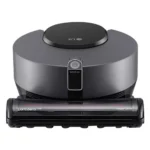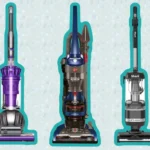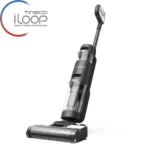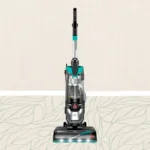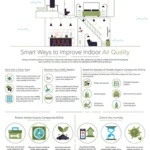Are you tired of constantly sneezing and struggling with allergies and asthma? Do you feel like your traditional vacuum cleaners are not doing enough to keep your home free from allergens and other pollutants? It’s time to upgrade to a quiet smart vacuum cleaner that is suitable for people with allergies and asthma. But with so many options in the market, how do you choose the best one for your needs? In this guide, we’ll walk you through the essential factors to consider and review some of the top options. Keep your home allergen-free and breathe easier with the best quiet smart vacuum cleaners for allergies and asthma.
What to Consider
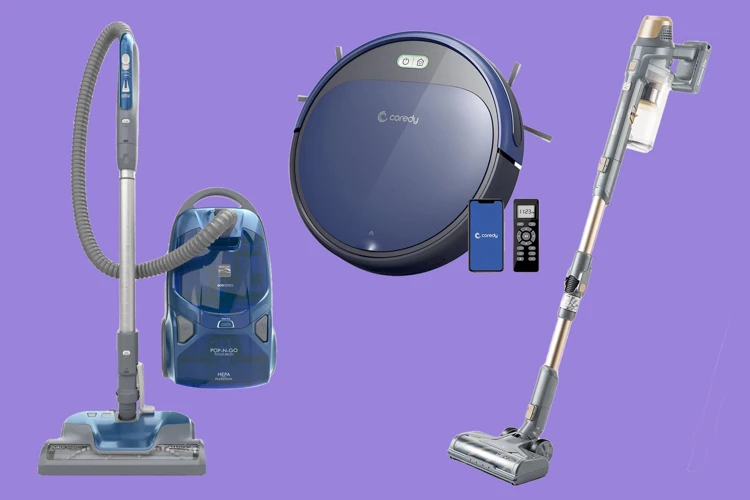
When it comes to choosing the best vacuum cleaner for allergies and asthma, there are several factors to consider. Filter system plays a crucial role in removing allergens and dust particles from the air. While a noise level determines whether you can enjoy a quiet and comfortable atmosphere while cleaning. Smart features can provide ease of use and convenience in controlling your vacuum cleaner. Lastly, price can also influence your buying decision. In this section, we will delve deeper into these considerations to help you make an informed decision. Learn more about benefits of quiet vacuum cleaners for allergies and asthma on our website.
Filter System
When choosing a smart vacuum cleaner for allergies and asthma, the filter system should be one of the top considerations. A good filter system in a smart vacuum cleaner can capture small particles, such as dust and allergens, reducing the number of irritants that are released back into the air.
HEPA filters are one of the most effective types of filters for trapping small particles. They are capable of capturing 99.97% of particles as small as 0.3 microns. This is important for those with allergies and asthma as they need to breathe clean air to avoid flare-ups. Some vacuum cleaners only have a single HEPA filter, while others have multiple filters to ensure the air is as clean as possible.
Pre-motor filters also play an important role in the filtration system. These filters capture larger particles before they enter the vacuum’s motor, protecting it from damage. This can in turn extend the life of the vacuum cleaner. Some smart vacuum cleaners have washable pre-motor filters that can be cleaned and reused.
Post-motor filters capture any remaining particles after the air has passed through the vacuum’s motor. These filters are important as they ensure that the air leaving the vacuum is as clean as possible.
Here is a table summarizing the different types of filters found in smart vacuum cleaners for allergies and asthma:
| Filter Type | Description | Benefits |
|---|---|---|
| HEPA Filters | Traps small particles as small as 0.3 microns. | Capable of capturing 99.97% of particles, reducing the number of irritants released back into the air. |
| Pre-motor Filters | Captures larger particles before they enter the vacuum’s motor. | Protects the vacuum’s motor from damage and increases the vacuum cleaner’s lifespan. |
| Post-motor Filters | Captures any remaining particles after the air has passed through the vacuum’s motor. | Ensures the air leaving the vacuum cleaner is as clean as possible. |
Investing in a smart vacuum cleaner with a good filtration system can bring numerous befits. Vacuum cleaners with HEPA filters can help reduce symptoms associated with allergies and asthma such as wheezing, shortness of breath, and chest tightness. If you want to read more about the benefits of quiet vacuum cleaners for allergies and asthma, check out our article on Quiet Smart Vacuum Cleaners for Allergies and Asthma.
Noise Level
When it comes to choosing a smart vacuum cleaner for allergies and asthma, noise level is an important factor to consider. Loud vacuum cleaners can be disruptive and even trigger asthma attacks or allergy symptoms due to the noise and air disturbance. It’s important to choose a vacuum cleaner with a noise level that won’t disturb your household or worsen your symptoms.
To help choose the quietest smart vacuum cleaner, refer to the table below for a comparison of decibel levels (dB) for popular models:
| Vacuum Cleaner Model | Noise Level (dB) |
|---|---|
| Dyson Cyclone V10 Absolute | 75 |
| iRobot Roomba i7+ | 58 |
| Shark Navigator Lift-Away Pro | 76 |
| Miele Complete C3 Vacuum Cleaner | 64 |
| Honeywell HPA300 Air Purifier | 55-65 |
As you can see, the iRobot Roomba i7+ has the lowest noise level with only 58 dB, making it an excellent choice for those with asthma, allergies, or sensitivity to loud noises. The Honeywell HPA300 Air Purifier is also a good option with a noise level ranging from 55-65 dB, depending on the fan speed.
Remember to keep in mind your personal tolerance for noise when choosing a smart vacuum cleaner. While some might find the Dyson Cyclone V10 Absolute to be a bit loud at 75 dB, others might not be bothered by it. It’s always a good idea to read reviews and consider the noise level alongside other features before making a final decision.
Smart Features
When it comes to choosing the best quiet smart vacuum cleaner for allergies and asthma, the smart features of the vacuum cleaner can make a big difference. The right choice of smart features can make your cleaning experience effortless and more effective. Here are some of the important smart features that you should consider before buying a smart vacuum cleaner.
| Smart Features | Description |
|---|---|
| Auto-Adjusting Suction | Smart vacuums that come with an auto-adjusting suction feature can automatically detect the floor type and adjust the suction power accordingly. This feature can help you prevent any damage to your delicate carpets and also save energy and time. |
| WiFi Connectivity | With WiFi connectivity, you can connect your smart vacuum to your smartphone, Alexa or Google assistant. This feature allows you to control your vacuum from your phone, schedule cleaning tasks, and receive alerts and notifications on your phone. |
| Mapping and Navigation | Smart vacuums equipped with mapping and navigation technology use sensors and cameras to create maps of your home and avoid obstacles while cleaning. This feature can help you navigate around furniture, stairs, and other obstacles with ease and efficiency. |
| Self Recharging | This feature enables your smart vacuum to automatically return to its charging dock when the battery is low. A smart vacuum with self-recharging is ideal for large houses and can save you time and effort. |
| Multi-Room Cleaning | Some smart vacuum models allow you to clean multiple rooms at once with a single command. This feature comes in handy for people with large homes and multiple pets. |
| Remote Monitoring | Some smart vacuum models give you the ability to remotely monitor the cleaning property from any location with an internet connection. This feature is ideal for people who often forget to switch off their smart vacuum after cleaning or want to keep track of their cleaning schedule. |
Having a smart vacuum cleaner with the right features can be a significant step towards reducing allergy and asthma symptoms. If you want to read more about how smart vacuum cleaners can reduce asthma and allergy symptoms, check out our article on smart vacuum cleaners and allergies. Additionally, if you’re interested in purchasing a quiet smart vacuum cleaner for allergies and asthma, check out our article on choosing the best quiet smart vacuum cleaner for allergies and asthma.
Price
When it comes to purchasing a smart vacuum cleaner, price is a crucial factor to consider. You don’t want to spend beyond your budget, but you also want to ensure that you’re getting the best value for your money. To make it easier for you, we’ve compiled a list of the top smart vacuum cleaners for allergies and asthma at different price points.
| Smart Vacuum Cleaner | Price |
|---|---|
| Dyson Cyclone V10 Absolute | $599.99 |
| iRobot Roomba i7+ | $999.99 |
| Shark Navigator Lift-Away Pro | $199.99 |
| Miele Complete C3 Vacuum Cleaner | $999.00 |
| Honeywell HPA300 Air Purifier | $249.99 |
As you can see, the prices range from $199.99 to $999.99, depending on the brand, features, and technology used. If you’re on a tight budget, the Shark Navigator Lift-Away Pro is a great option as it offers premium features at an affordable price. On the other hand, if you’re looking for a premium model with advanced features, the iRobot Roomba i7+ and the Miele Complete C3 Vacuum Cleaner are excellent choices.
Ultimately, the price should not be the only factor in your decision-making process. Before you make a purchase, consider your specific needs, the features you require, and the quality of the product. Remember, you’re investing in an appliance that will help improve your health and make your life easier, so it’s important to choose wisely.
Top Smart Vacuum Cleaners for Allergies and Asthma
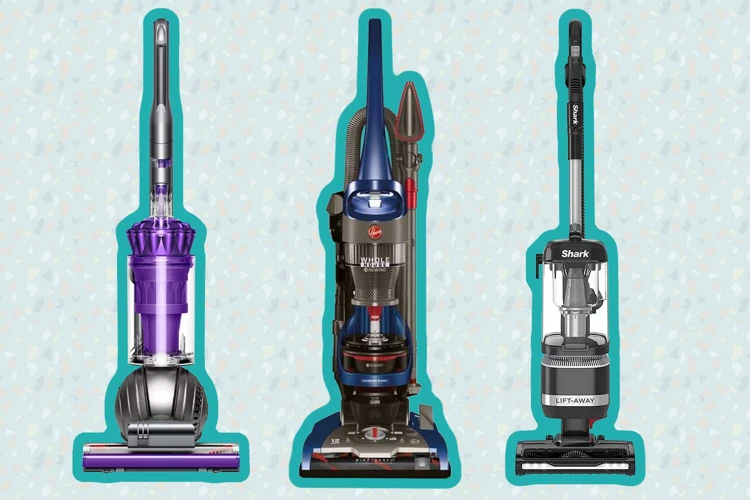
Are you tired of constantly battling allergies and asthma symptoms in your own home? One of the best ways to reduce the amount of allergens in your living space is by regularly cleaning with a high-quality vacuum cleaner designed specifically for people with allergies and asthma. But with so many options on the market, how can you know which one to choose? That’s why we’ve put together a list of the top smart vacuum cleaners for allergies and asthma to help make your decision easier. These vacuums have been tested and approved by experts and consumers alike, and all offer unique features to fit your individual needs.
Dyson Cyclone V10 Absolute
The Dyson Cyclone V10 Absolute is an excellent choice for those who suffer from allergies and asthma. Here are some of the standout features of this smart vacuum cleaner:
- Powerful suction: The V10 motor can provide up to 150 AW of suction power, making it great for picking up dirt, dust, and allergens from carpeted floors and upholstery.
- Advanced filtration system: The Cyclone V10 Absolute uses a fully sealed filtration system that captures up to 99.97% of particles as small as 0.3 microns. This includes dust mites, pollen, and other common allergens.
- Multiple cleaning modes: The vacuum comes with three different cleaning modes that can be easily adjusted depending on the surface you’re cleaning.
- Versatile design: The Dyson Cyclone V10 Absolute can be used as a stick or handheld vacuum and comes with a range of accessories for cleaning different surfaces and hard-to-reach areas.
- Smart features: The vacuum has an LCD screen that displays filter maintenance reminders and battery life, and it automatically adjusts suction power for different floor types.
- Long battery life: The Cyclone V10 Absolute can run for up to 60 minutes on a single charge and comes with a wall-mounted docking station for easy storage and recharging.
The Dyson Cyclone V10 Absolute is an ideal choice for anyone who values powerful suction, advanced filtration, and smart features in a vacuum cleaner. Its versatile design and long battery life also make it a great option for those with larger homes or more complex cleaning needs.
iRobot Roomba i7+
When it comes to smart vacuum cleaners, the iRobot Roomba i7+ is one of the best options for both allergy and asthma sufferers. Here are some of its notable features:
- Advanced Navigation: The iRobot Roomba i7+ uses vSLAM navigation technology to create detailed maps of your home. This allows it to navigate around furniture, carpeting, and other obstacles with ease.
- High Efficiency Filter: The vacuum comes with a High Efficiency Filter that captures 99% of allergens, pollen, and dust as small as 10 microns.
- Automatic Dirt Disposal: The iRobot Roomba i7+ comes with a charging base that doubles as an Automatic Dirt Disposal. This allows it to empty its bin on its own, so you don’t have to worry about allergens getting stirred up when you’re emptying it manually.
- Smartphone Integration: You can control and schedule the vacuum through the iRobot Home App. This also allows you to monitor the device’s performance, get alerts, and send it to specific rooms when needed.
- Compatible with Voice Assistants: You can also connect the iRobot Roomba i7+ to your Amazon Alexa or Google Assistant devices.
The iRobot Roomba i7+ offers a combination of smart features and powerful suction capabilities that make it a great choice for those with allergies and asthma. Its advanced navigation, high efficiency filter, and automatic dirt disposal system make it a standout among its competitors.
Shark Navigator Lift-Away Pro
One of the top options for a quiet smart vacuum cleaner for allergies and asthma is the Shark Navigator Lift-Away Pro. This vacuum cleaner has a powerful suction that can effectively remove allergens and dust particles from floors, carpets, and upholstery.
One of the standout features of the Shark Navigator Lift-Away Pro is its HEPA filter system, which can capture 99.9% of dust and allergens. This makes it an ideal choice for those with allergies and asthma, as it can prevent the particles from being released back into the air. The vacuum also has an Anti-Allergen Complete Seal Technology which helps to prevent the allergens from escaping from the vacuum.
In addition to its strong filter system, the Shark Navigator Lift-Away Pro also has a quiet operation at only 86 decibels. This means it won’t disturb anyone in the house or startle pets. The vacuum is also smart, with LED lights on the wand to help with visibility in dark areas and a button for switching between carpet and hard floor cleaning modes.
When it comes to price, the Shark Navigator Lift-Away Pro is a mid-range option, making it an affordable choice for many households. It also has a versatile design that allows it to be used as an upright vacuum, a handheld vacuum for stairs and upholstery, and a canister vacuum for hard-to-reach areas.
The Shark Navigator Lift-Away Pro is an excellent choice for a quiet smart vacuum cleaner for allergies and asthma. Its powerful suction, HEPA filter system, quiet operation, and versatile design make it an ideal vacuum for many households.
| Pros | Cons |
|---|---|
| Powerful suction | May be heavy for some users |
| Effective HEPA filter system | May require frequent filter replacement |
| Quiet operation | May have difficulty cleaning high-pile carpets |
| Smart design with LED lights and versatile cleaning modes | Average battery life for handheld mode |
| Affordable price | May have occasional clogging issues |
Miele Complete C3 Vacuum Cleaner
One of the best quiet smart vacuum cleaners for allergies and asthma is the Miele Complete C3 Vacuum Cleaner. It is equipped with an outstanding filtering system and impressive suction power, making it a top choice for those who suffer from respiratory issues.
Below is a table summarizing the key features of the Miele Complete C3 Vacuum Cleaner:
| Filter System | HEPA AirClean filter and AirClean dustbag |
| Noise Level | As low as 44 dB |
| Smart Features | 6-speed motor, on-board tool storage, and automatic cord rewinder |
| Price | Expensive, starting at around $1,000 |
The Miele Complete C3 Vacuum Cleaner boasts an impressive HEPA AirClean filter and AirClean dustbag that capture 99.9% of all particles and allergens. This makes it an excellent choice for individuals with allergies and asthma.
In addition to its powerful filtering system, the Miele Complete C3 Vacuum Cleaner is also known for its quiet operation. It can run at a noise level as low as 44 dB, making it an ideal choice for those who are sensitive to noise.
The vacuum cleaner also comes with a range of smart features, such as a 6-speed motor, on-board tool storage, and an automatic cord rewinder. These features make cleaning easier and more efficient.
However, the Miele Complete C3 Vacuum Cleaner does come with a significant price tag, starting at around $1,000. While this may deter some buyers, the vacuum’s exceptional filtration and powerful suction make it a worthwhile investment for individuals with allergies and asthma.
The Miele Complete C3 Vacuum Cleaner is an excellent choice for those looking for a quiet and effective vacuum cleaner that can help alleviate respiratory issues.
Honeywell HPA300 Air Purifier
One of the best options for those with allergies and asthma is the Honeywell HPA300 Air Purifier. This purifier uses a HEPA filter that captures up to 99.97% of microscopic allergens as small as 0.3 microns, including dust, pollen, smoke, and pet dander. What sets the HPA300 apart from other air purifiers is its ability to circulate air up to 5 times an hour, effectively reducing the amount of potential allergens in your home.
Some of the key features of the Honeywell HPA300 Air Purifier include:
- 3 air-cleaning levels and turbo clean setting: allows you to customize the purifier’s performance to your specific needs, whether you need to quickly clean the air or want a low noise level.
- Filter replacement indicator: alerts you when it’s time to replace the HEPA filter to ensure optimal performance.
- Energy Star certification: this air purifier is energy-efficient and can help lower your energy bills while reducing your carbon footprint.
- Durable construction: the Honeywell HPA300 is built to last and comes with a 5-year warranty.
For those with allergies and asthma, using an air purifier like the Honeywell HPA300 can provide relief from symptoms and improve overall air quality in the home. However, it’s important to note that an air purifier should be used in conjunction with regular cleaning and maintenance, as it is not a substitute for proper dusting and vacuuming. The Honeywell HPA300 is a great option for those looking for a high-quality and effective air purifier.
How to Use a Smart Vacuum Cleaner Safely with Allergies and Asthma
When it comes to using a smart vacuum cleaner with allergies and asthma, it’s important to take extra precautions to ensure your health and safety. While a smart vacuum cleaner can make cleaning easier and more efficient, it can also stir up allergens and irritants that can trigger asthma and allergy symptoms. In this section, we’ll explore some essential tips and guidelines for using a smart vacuum cleaner safely and effectively, so you can keep your home clean and healthy without putting your health at risk.
Regular Maintenance
To keep your smart vacuum cleaner in top condition and ensure it is working effectively for those with allergies and asthma, regular maintenance is crucial. Here are some tips to help you maintain your smart vacuum cleaner:
Clean the Filter Regularly: The filter system is the most important part of a vacuum cleaner for allergies and asthma. If it becomes clogged with dust and debris, it will not function correctly, and allergens will still make their way back into your home. Make sure to clean the filters regularly, as per the manufacturer’s instructions, or change them entirely when necessary.
Empty the Dustbin Frequently: It’s essential to empty the dustbin of your smart vacuum cleaner regularly, especially if you have a high level of foot traffic in your home, or pets. Allergens and dust particles can accumulate, decreasing the efficiency of the vacuum cleaner.
Clean the Brush Roll: The brush roll should be cleaned at least every few months, as hair and other debris can entangle around it, making it less efficient or even prevent it from rotating altogether.
Inspect and Replace Parts: If you notice that the suction power of your vacuum cleaner has decreased or that it’s making strange noises, examine the hoses, brushes, and other parts for damage or clogs. Replace them if necessary or take your vacuum cleaner to a professional for help.
Store It Correctly: When you’re finished using your smart vacuum cleaner, it’s essential to store it correctly. Clean it, empty the dustbin, and then store it in a dry place. Keeping your vacuum cleaner dry and dust-free will help prolong its lifespan and ensure that it continues to function effectively for those with allergies and asthma.
By following these regular maintenance tips, you can help ensure that your smart vacuum cleaner is working to its full capacity and helping to minimize the allergens in your home.
Proper Ventilation
Adequate ventilation is essential when using a smart vacuum cleaner, especially for individuals with allergies and asthma. Strong chemicals and allergens can hang around in confined spaces, which can cause harm to the respiratory system. Proper ventilation can minimize the risk of inhaling airborne particles and pollutants.
One way to ensure proper ventilation is by opening windows and doors while cleaning with a vacuum. This will provide a constant flow of fresh air, reducing the concentration of pollutants and chemicals in the air. If you live in an area with high levels of outdoor air pollution, ensure that your home’s air filters are clean and functioning correctly to avoid additional allergens from outdoor air pollution.
Another solution is to use an air purifier in conjunction with a smart vacuum cleaner. An air purifier will help filter out polluting substances, such as dust, pet dander or pollen. It will capture these allergens before they can reach your nose or lungs. Make sure to choose a high-quality air purifier that uses a certified HEPA filter to ensure maximum efficiency in trapping air particles. Here are some great options :
| Air Purifier | Filter Type | Noise Level | Price |
| Honeywell HPA300 | Certified HEPA Filter | Level 1 (Lowest) | $225 |
| Austin Air Healthmate | 4-Stage Medical Grade HEPA filter | Level 2 (Low) | $595 |
| Coway AP-1512HH | True HEPA filter | Level 1 (Lowest) | $230 |
Proper ventilation is crucial when using a smart vacuum cleaner, particularly for people with respiratory conditions. Ensure that you have an adequate supply of fresh air throughout your home or apartment, and use an air purifier to trap as many pollutants as possible. With these precautions in place, you can significantly reduce the number of allergens and pollutants in your indoor space, contributing to a healthier living environment.
Using HEPA Filters
When it comes to choosing the best quiet smart vacuum cleaner for allergies and asthma, one of the most important factors to consider is the filter system. HEPA filters are highly recommended for individuals with asthma and allergies because they can trap tiny particles such as pet dander, dust mites, and pollen.
Here are some tips for using HEPA filters:
- Replace the filters regularly – HEPA filters need to be replaced every 6 to 12 months, depending on your usage. This ensures that the filter is working at its optimal level.
- Check the filter compatibility – Before purchasing a new filter, make sure it is compatible with your vacuum cleaner model.
- Don’t wash HEPA filters – Unlike regular filters, washing a HEPA filter can damage it and reduce its effectiveness. Instead, use a soft brush to gently remove any debris or dirt.
- Invest in a vacuum cleaner with a sealed HEPA system – A vacuum cleaner with a sealed HEPA system prevents any dust, particles or allergens from escaping back into your home.
- Use a pre-filter – A pre-filter can trap larger particles like hair, preventing them from entering the HEPA filter, thus extending its lifespan.
By following these tips, you can ensure that your vacuum cleaner with a HEPA filter performs optimally in reducing airborne allergens, improving indoor air quality and creating a safer environment for individuals with allergies and asthma.
Cleaning Tips
Keeping your smart vacuum cleaner clean is essential for it to function properly and effectively. Regular cleaning of the brush roll and filter system will ensure that your vacuum is working at its best to trap allergens and other particles in your home. Here are some cleaning tips to ensure that your smart vacuum cleaner is always ready to help you combat allergies and asthma:
| Cleaning Tasks | Frequency |
|---|---|
| Clean the brush roll | Every 1-2 weeks |
| Wash or replace the filter | Every 1-3 months |
| Empty the dustbin | After every use |
| Wipe down the exterior | As needed |
When cleaning the brush roll, remove any hair, lint, or debris that is wrapped around the brush. You can use scissors or a brush cleaning tool to remove any stubborn debris. For washing or replacing the filter, refer to the manufacturer’s instructions for your specific vacuum model. Emptying the dustbin after every use will prevent any buildup of dust or allergens in your vacuum cleaner.
It’s also important to wipe down the exterior of your vacuum cleaner as needed. This will help prevent the spread of dust and allergens around your home.
Remember to always unplug your vacuum cleaner before performing any maintenance or cleaning tasks. By following these cleaning tips, you can ensure that your smart vacuum cleaner is always functioning at its best to help you combat allergies and asthma in your home.
Conclusion
In conclusion, choosing the best quiet smart vacuum cleaner for allergies and asthma requires careful consideration of several factors. The filter system is crucial in preventing allergens and irritants from circulating back into the air. A noise level that is too high can also aggravate respiratory problems, so it’s important to look for a vacuum cleaner that operates quietly. Smart features such as voice control, scheduling and self-navigation can make managing allergies and asthma easier, but they also come at an additional cost. Price is another important consideration, as smart vacuum cleaners with advanced filtration systems can be expensive.
When it comes to the best smart vacuum cleaners for allergies and asthma, the Dyson Cyclone V10 Absolute tops the list with its powerful suction and advanced HEPA filtration system. Meanwhile, the iRobot Roomba i7+ stands out for its self-emptying feature, making it an ideal choice for those with severe allergies or asthma. The Shark Navigator Lift-Away Pro is another popular option for its effectiveness in removing dust and debris while keeping the air clean.
In addition to investing in the right vacuum cleaner, it’s important to use it safely with allergies and asthma in mind. This means regular maintenance, proper ventilation, using HEPA filters, and following proper cleaning tips. By taking these precautions, you can keep your home clean and free of allergens, while also keeping your respiratory health in check.
Ultimately, finding the best quiet smart vacuum cleaner for allergies and asthma may require a compromise between price, features and performance. However, by carefully weighing your options and taking the necessary precautions, you can make an informed decision and improve your overall quality of life.
Frequently Asked Questions
What makes a vacuum cleaner good for allergies and asthma?
A vacuum cleaner good for allergies and asthma should have a HEPA filter that can trap small allergens and dust particles, reduce or eliminate the release of allergens into the air, and have a powerful suction.
What is a HEPA filter?
HEPA (High-Efficiency Particulate Air) filter is a type of filter that can capture 99.97% of particles as small as 0.3 microns, including dust, pollen, pet dander, and other allergens. It is important for people with allergies and asthma because it reduces the number of allergens in the air.
What is the noise level of a quiet smart vacuum cleaner?
A quiet smart vacuum cleaner usually has a noise level of around 60 decibels or less. To put that into perspective, a normal conversation produces about 60 decibels of noise.
Can smart vacuum cleaners be controlled with a smartphone?
Yes, most smart vacuum cleaners come with their own mobile apps, which allows users to remotely control their vacuum cleaner from their smartphones.
How much should I expect to spend on a smart vacuum cleaner?
The price of a smart vacuum cleaner can range from $100 to more than $1,000. It depends on the brand, features, and overall quality.
Do smart vacuum cleaners work on all types of floors?
Most smart vacuum cleaners work on all types of floors, including tiles, hardwood, carpets, and rugs.
How often should I replace the filters on my smart vacuum cleaner?
It is recommended to replace the filters on your smart vacuum cleaner every six months to ensure optimal performance.
Can using a smart vacuum cleaner worsen my allergies and asthma?
Using a smart vacuum cleaner with a HEPA filter can actually improve allergies and asthma symptoms by reducing the number of allergens in the air. However, it is important to follow proper usage guidelines and maintenance procedures.
Are there any safety precautions to keep in mind when using a smart vacuum cleaner?
Some safety precautions to keep in mind when using a smart vacuum cleaner with allergies or asthma include wearing a mask to avoid breathing in allergens and dust particles, keeping windows and doors open for better ventilation, and regularly cleaning the filters and dustbin to prevent clogs and reduce the release of allergens.
What is the best way to clean a smart vacuum cleaner?
The best way to clean a smart vacuum cleaner is to follow the manufacturer’s instructions for cleaning and maintenance, which often involves regularly emptying the dustbin, cleaning the filters, and checking all components for wear and tear.



